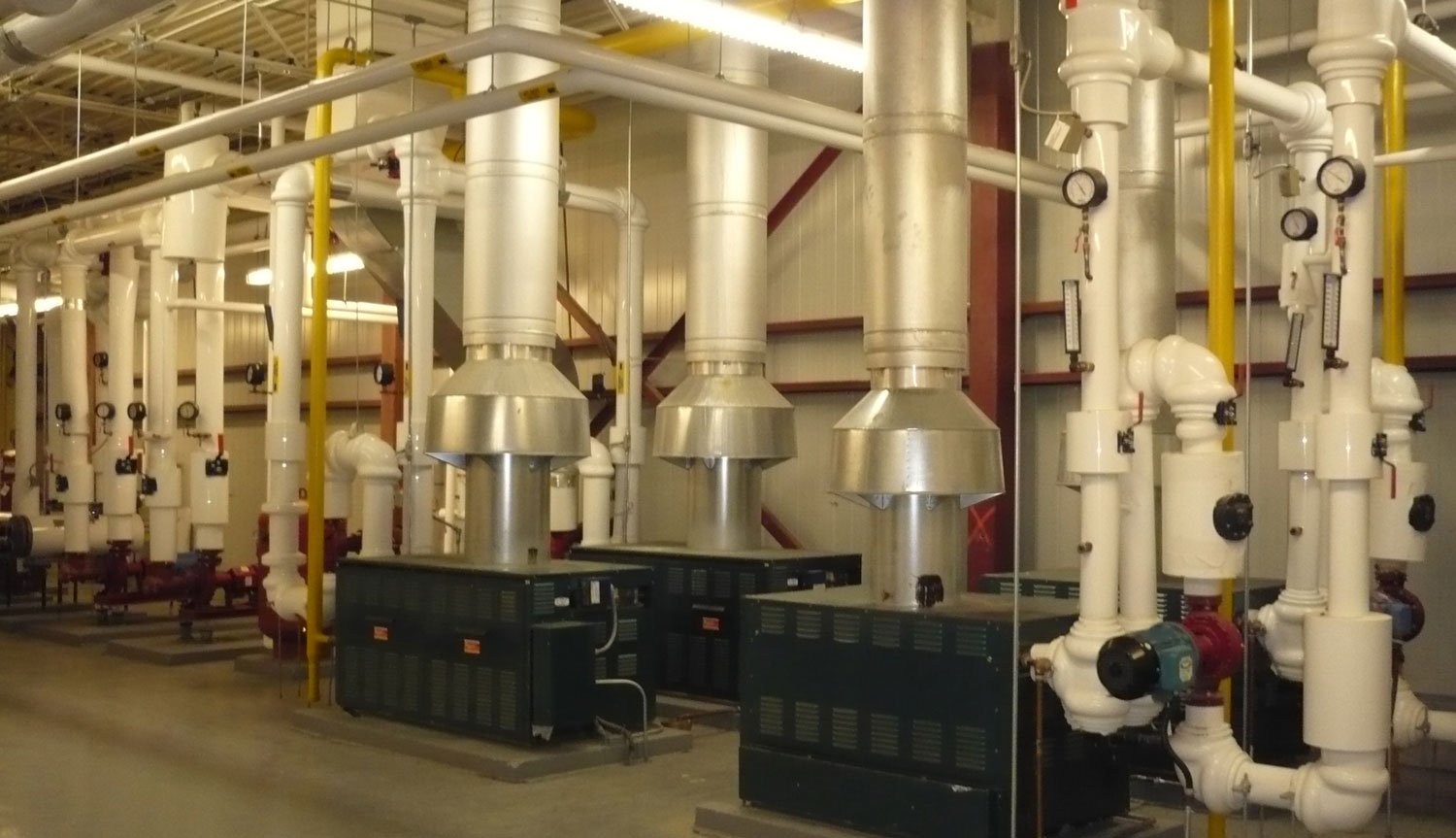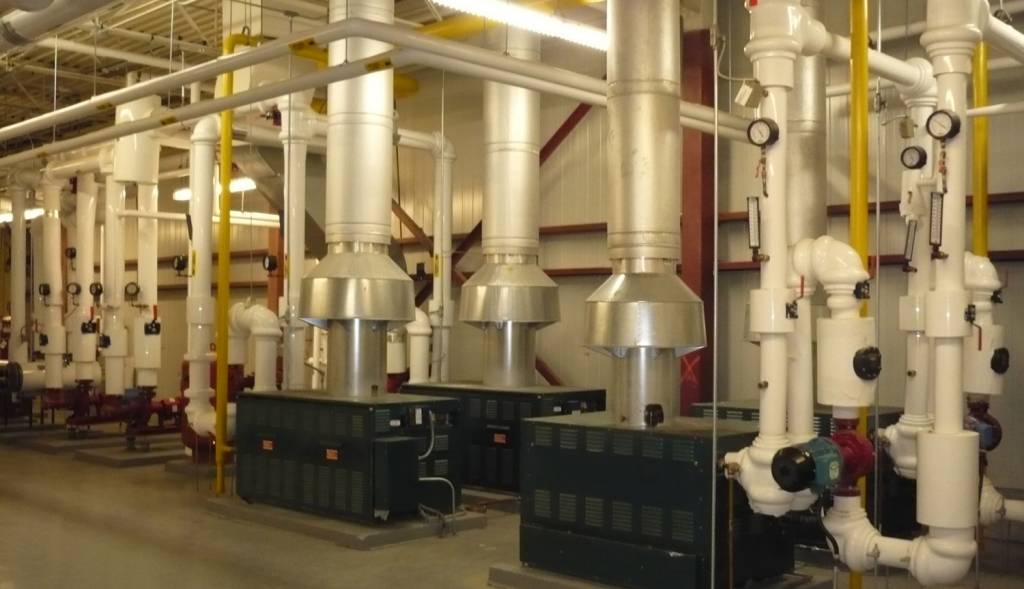According to the International Energy Agency, in Canada’s building sector, heating and cooling accounts for approximately 65% of the country’s power consumption. A significant amount of new demand for heating and cooling installations comes from new buildings, which are being constructed at 5% more than the increase in population per year. However, as climate awareness and net-zero goals become more widespread, there is also a growing trend in the Greater Toronto Area of buildings undergoing “deep energy” renovations. These aim to eliminate costly inefficiencies and retrofit structures to represent tenants’ environmental values and goals better.
According to the Clean Technology Scenario, even though the total amount of building space in Canada is expected to increase by 40% by 2050, the amount of energy consumption will fall by as much as 35%. Of this reduction, 85% of it is expected to result from improved efficiencies in how buildings are heated and cooled. Thanks to incredible innovations in HVAC technologies, it is now possible for commercial buildings to stay warm throughout even the harsh Toronto winters without taxing the environment or the wallets of those paying the power bills.
Particularly as COVID-19 restrictions relax and people begin returning to their offices, the public is increasingly aware of the importance of working in an environment with an HVAC system that keeps them safe and healthy. Choosing the wrong type of heating system can not only lead to inefficiencies but also significantly reduce overall air quality, potentially leading to quality-of-life concerns for occupants. Not too long ago, concerns were raised about the airborne transmission of COVID-19 in commercial office spaces, highlighting how detrimental poor air quality can be in cramped working quarters.
In 2021, there are many incentives to invest in a new commercial HVAC unit. Here are some reasons to consider:
- Innovations mean new HVAC units are technologically far more advanced and efficient than old models, saving your building from high operating costs in the long run.
- Following the outbreak of COVID-19, the demand for buildings to make upgrades to old or poorly running HVAC systems has become a key talking point amongst tenants and employees.
- By investing in energy efficiency, you not only save money but also demonstrate to tenants your commitment to environmental sustainability and reducing your carbon footprint.
- As regulations tighten for commercial spaces, building owners may be forced to make costly upgrades to stay up to code. By doing these proactively, you may save time and money in the future.
To help you better understand your options for a new commercial heating system and what the advantages are of each, our experts have put together this comprehensive guide.
Commercial Boilers
The basic technology behind commercial boiler heating has been around for centuries. While many boilers still use fuels like natural gas, more and more units are being powered directly by electricity, leading to a more straightforward installation process. In essence, fuel is burned to heat water, and this water is then circulated to condition the air throughout a building.
For a boiler to provide heat, either the hot water itself or steam is circulated through pipes and radiators around the building. While this heating method is often seen as old-fashioned in North America, it is still widely used throughout the UK and Europe due to its immense efficiency.
As a commercial heating solution, boilers tend to be better suited to smaller buildings, where heat can be circulated without traveling through extensive lengths of piping, which can lead to a loss of temperature.
Commercial Rooftop Units (RTU)
It is best used for buildings up to eight stories in height, and rooftop units operate by drawing in outside air and mixing it with recirculated air. This air is then filtered, conditioned, and sent back through the building’s ventilation systems at the desired temperature. RTUs are desirable for being easy to configure to heat an entire building or specific zones as needed.
RTUs are pretty energy-efficient and can be both easily installed and maintained. They are commonly used in these types of commercial facilities:
- Schools
- Small to medium offices
- Data centers and other small to medium-tech facilities
- Hospitals and other medical centers
Fresh Air Make-Up Units (MUA)
These systems are ideal for commercial settings where air needs to be consistently refreshed to maintain acceptable quality levels. Rather than constantly recirculating air throughout an office, which can lead to staleness and decreased quality over time, MUAs replenish the system with fresh air from outside.
This process also helps avoid depressurization in buildings, which occurs when more air is being exhausted than entering the space. Depressurization creates building environments where stale or polluted air becomes trapped inside, leading to the unwanted buildup of potentially harmful particulates.
Commercial Heat Pumps
Heat pumps operate similarly to boilers, rather than generating heat through the burning of fuels, and they use passive sources such as the sun, geothermal energy, and waste heat.
With regulations and public pressure making environmental responsibility a serious consideration for business owners and building operators, looking for meaningful ways to conserve energy is all the more important. It’s no surprise that more and more businesses are switching to commercial heat pump solutions, which offer an environmentally conscious and sustainable alternative to conventional methods.
Here are some of the advantages of commercial heat pumps:
- Far more energy efficient than other solutions
- Save on energy bills as a result of using passive heating
- Decrease your building’s carbon footprint
Gas Fired Unit Heaters for Commercial Buildings
Typically using either propane or natural gas, these systems directly condition a building’s air by passing it through a heating element containing a constantly burning flame. Thanks to decades of development and refinement, gas-fired units have achieved an incredible level of efficiency and effectiveness, capable of being scaled to work in buildings of almost any size. They are known for their durability as well as for being easily repaired.
Here are some of the benefits of gas-fired commercial heaters:
- Highly efficient
- Offers a self-contained, powerful heating solution
- Highly scalable depending on the needs of the building being heated
- Durable even in extreme conditions
Commercial Radiant Tube Heaters
Capable of functioning in rooms with a ceiling height ranging from 5’ to 50’, radiant tube heaters are a decentralized solution that offers commercial areas the ability to heat specific zones selectively. Rather than heating air in a centralized location and then distributing it throughout a building, these gas-powered systems directly condition the air of the room, they are installed in.
While not necessarily viable for commercial spaces with numerous rooms, radiant tube heaters offer a flexible, easy-to-moderate system, which can save money for those who do not need to heat an entire space.
Commercial Forced Air Furnaces
Forced air furnaces function much in the same way gas-fired units do. They operate in a centralized unit where fuel is burned. Air is then circulated through the unit to filter, control humidity, and regulate temperature. Once this is done, the air is then “forced” through the building’s ventilation systems to heat it.
Forced air systems are commonly used in commercial settings because they are relatively efficient and easy to maintain. This form of commercial heating has also seen innovations in technology, such as two-stage furnace systems, which improve energy efficiency and air control.
Ductless Split Systems
If you find your commercial building is prone to cold spots, or you are looking to change how only a few rooms are heated, ductless split systems are ideal. These units are suited for buildings where vents may not already be installed or when putting in a conventional heating solution may be too disruptive. Easy to install and maintain, ductless systems offer a quicker, hassle-free solution to upgrading your building’s heating.
Here are some of the advantages:
- Highly customizable, depending on the building’s requirements
- Offers a wide range of placement options
- Easy to install and maintain
- Easy to regulate temperature
Fan Coils
Like a ductless system, fan coil heating solutions are entirely localized, meaning they do not require complex ductwork and ventilation systems to install. They are ideal for situations where a single area, rather than an entire building, needs to be heated, and the advantage is that they are entirely self-contained and easy to install.
Fan coils also offer building managers greater control over temperature conditioning in specific areas, without the complex calibrations and refinements often needed by centralized systems.
Perimeter Radiation Coils
Located around the edges of a room, perimeter radiation coils directly condition an area’s air by exposing it to the heat produced, usually by hot water or steam, which runs throughout a building. This solution is often championed for its high energy efficiency and lack of reliance on vent systems, which can be disruptive to installation and often lead to the circulation of dust and pollutants throughout a building.
Here are some of the advantages:
- Energy efficient
- Low profile
- Does not require vents to be installed
- Directly heats rooms rather than relying on circulation systems
Commercial Heating Maintenance – The Importance of a Proactive Maintenance Agreement (PMA)
Once you have chosen a commercial heating system and installed it, it is crucial to implement a plan for its ongoing maintenance. Too often, building managers or owners neglect their HVAC systems, seeing regular upkeep as an unwanted expense rather than an essential step in guaranteeing your system lasts for the full length of its intended lifetime.
With all our commercial HVAC installations in the Markham and Greater Toronto Area, we always recommend our customers consider a Proactive Maintenance Agreement. We will work with you to find an annual solution that suits your budget and fits your building needs to ensure your commercial heating system does not fail when you need it most.
Here are some of the advantages of choosing a PMA:
- Extended lifespan: By ensuring your HVAC unit is routinely maintained, you can extend its lifespan by years. Maintenance includes re-lubricating motors and bearings, cleaning coils, replacing filters, and changing damaged components.
- Minimal repairs: Having your heating system regularly maintained anticipates problems before they become serious issues. This helps you avoid costly repairs and the inconvenience that loss of heating can cause for you and your tenants.
- Low energy costs: If an HVAC unit is not maintained correctly, increased strain can be put on the system as its parts lose their effectiveness. When this happens, it increases the likelihood that the unit will break down and reduce its efficiency while operating. This can cost buildings immense sums of money in increased power bills as more energy is required to do the same heating job.
With over 40 years of experience servicing commercial clients in the Markham and Greater Toronto area, Tri-Air Systems is trusted for its constant dedication to our clients’ satisfaction. Our team of experts will work closely with you throughout choosing an HVAC unit to ensure you pick the solution that best suits your building’s needs and unique requirements.
When you choose Tri-Air Systems, you are not just buying a commercial HVAC system, but you are also kicking off a long relationship with a company that will ensure you get the most from your unit. With rapid response times for emergencies and bespoke Proactive Maintenance Agreements, you can feel confident in your commercial heating system to keep your building warm 24/7 throughout the cold months.
For expert advice on the best heating system for your building, call 905-470-2424. You can also contact us online to schedule a consultation, order a new HVAC system, or discuss a commercial heating maintenance plan.
FAQs:
1. What percentage of power consumption in Canada’s building sector is attributed to heating and cooling?
- Answer: Heating and cooling account for approximately 65% of the country’s power consumption in the building sector.
2. How much is the expected increase in building space in Canada by 2050, and what is the projected energy consumption decrease?
- Answer: The building space in Canada is expected to increase by 40% by 2050, with a projected 35% decrease in energy consumption, primarily due to improved efficiencies in heating and cooling systems.
3. What are some reasons to invest in a new commercial HVAC unit in 2021?
- Answer: Some reasons include technological advancements leading to higher efficiency, increased demand for upgrades post-COVID-19, cost savings, environmental sustainability, and regulatory compliance.
4. What are the main types of commercial heating systems available, and what are their advantages?
- Answer: The main types include commercial boilers, rooftop units (RTU), fresh air make-up units (MUA), heat pumps, gas-fired unit heaters, radiant tube heaters, forced air furnaces, ductless split systems, fan coils, and perimeter radiation coils. Each has unique advantages depending on the building’s size, layout, and heating needs.
5. Why is a Proactive Maintenance Agreement (PMA) essential for commercial heating systems?
Answer: A PMA ensures routine maintenance of HVAC units, extending their lifespan, minimizing repairs, and reducing energy costs. It includes tasks such as lubricating motors, cleaning coils, replacing filters, and addressing damaged components, ultimately ensuring uninterrupted heating operation.






